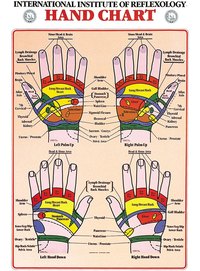 New Year’s resolutions tend to be big, impressive promises that we adhere to for short periods of time – that blissful stretch of January when we are starving ourselves, exercising daily and reading Proust. But, and you know this, rather than making extreme changes that last for days or weeks, we are better off with tiny ones lasting more or less forever.
New Year’s resolutions tend to be big, impressive promises that we adhere to for short periods of time – that blissful stretch of January when we are starving ourselves, exercising daily and reading Proust. But, and you know this, rather than making extreme changes that last for days or weeks, we are better off with tiny ones lasting more or less forever.
Mostly, though, when it comes to diet, we are told the opposite. We have a billion-dollar industry based on fad diets and quick fixes: Eat nothing but foam packing peanuts and lemon tea, and you’ll lose 30 pounds (14 kilograms) in 30 days. Then what? Resolutions work only if we are resolute, and changes are meaningful only if they are permanent.
What follows are some of the easiest food-related resolutions you will ever make, from cooking big pots of grains and beans once a week, to buying frozen produce, to pickling things à la “Portlandia.” Committing to just a few of these, or even one, will get you moving in the right direction toward eating more plants and fewer animal products and processed foods.
My suggestions are incremental, but the ease with which you can incorporate them into your normal shopping, cooking and eating routines is exactly what makes them sustainable and powerful.
Flexitarianism is about making a gradual shift, not a complete overhaul. It is a way of eating we are much more likely to stick to for the long term – which, after all, is the point of resolutions in the first place.
COOK SIMPLE, UNSEASONED VEGETABLES EVERY FEW DAYS
You can steam or parboil or microwave. Once cooked, vegetables keep a long time. And then they’re sitting there waiting to top pastas and grains, to bolster soups and salads, to whip up veggie wraps or just to reheat in oil or butter with seasonings.
Leftover vegetable spread – Purée any leftover vegetables (as long as they are tender) in the food processor with olive oil, fresh parsley leaves, lemon juice, salt and pepper until the mixture reaches the consistency you want. Serve with bread, crackers or crudités. It’s nice on toast as breakfast.
COOK BIG BATCHES OF GRAINS AND BEANS
Because it’s nearly effortless, and having cooked grains and beans on hand at all times makes day-to-day cooking a breeze. They will keep in the fridge up to a week. White beans with kale and sausage – Sauté some loose Italian sausage in olive oil until lightly browned. Add minced garlic, cooked white beans, chopped kale, a splash of bean-cooking liquid or water, salt and pepper. Simmer until beans are hot and kale is wilted. To garnish, add oil and parsley.
BUY HALF AS MUCH MEAT, AND MAKE IT BETTER MEAT
Thinking of eating meat as an indulgence lets you buy tastier, healthier, more sustainable meat without breaking the bank.
Thai beef salad – Grill, broil or pan-sear a small piece of flank or skirt steak until medium-rare; set aside. Toss salad greens; plenty of mint, cilantro and basil; chopped cucumber; and thinly sliced red onion. Dress with a mixture of lime juice, fish sauce, sesame oil, sugar and minced jalapeño. Thinly slice the steak and lay it on top; drizzle with a little more dressing and any meat juices. Garnish with herbs.
SPLURGE WHEN YOU CAN
That way, the foods you consider special treats are truly special. For me it’s dark chocolate, meat and cheese.
Dark chocolate ganache – Heat 1 cup cream in a saucepan until steaming. Put 8 ounces chopped bittersweet chocolate in a bowl and pour the hot cream on top. Stir to melt and incorporate the chocolate; use immediately as a sauce, or cool to room temperature and whip to make a smooth frosting or filling.
BUY FROZEN FRUITS AND VEGETABLES
Because out-of-season produce from halfway around the world doesn’t make much sense or taste best. Fruits and vegetables (from peaches, to corn, to squash) frozen when they are ripe are a better alternative, and incredibly convenient.
Frozen peach jam – Combine 1 pound frozen peaches, 1/4 cup sugar and 2 tablespoons lemon juice in a medium saucepan over medium heat. Bring to boil, then adjust heat so it bubbles steadily. Cook, stirring occasionally until thick, 15 to 30 minutes. Cool completely; it will keep in fridge at least a week.
PICKLE
So the copious amounts of fresh produce you buy never have to go to waste. And because it tastes good.
Quick-pickled cucumbers and radishes – Put thinly sliced cucumbers and radishes (use a mandoline if you have one) in a colander. Sprinkle with salt, gently rubbing it in with your hands. Let sit for 20 minutes, tossing and squeezing every few minutes. When little or no liquid comes out, rinse and put in a bowl. Toss with some sugar, dill and vinegar, and serve. Garnish with dill.
MAKE YOUR OWN HUMMUS, BEAN DIPS AND NUT BUTTERS
With those around, vegetables and fruit practically dip themselves. You’ll be filling up on produce without even noticing it.
Hummus – In a processor or blender, combine cooked chickpeas, minced garlic, tahini, lemon juice, olive oil, salt and pepper. Purée; taste and adjust the seasoning. Garnish with oil, lemon and smoked paprika.
MAKE YOUR OWN CONDIMENTS
Store-bought versions of ketchup, barbecue sauce, salsa and the like are often loaded with preservatives and sugar. Besides, creating your own recipes is a blast.
Marjoram pesto – In a small food processor, combine a cup of marjoram (leaves and small stems) and some garlic; process until finely minced. Add red wine vinegar and olive oil; purée. Add capers (about a tablespoon) and pulse a few times. Season with salt and pepper to taste.
EAT VEGETABLES FOR BREAKFAST
You already eat fruit for breakfast, so what’s so strange? Veggie-based breakfasts are common around the world: cucumber and tomato salads in Israel, pickled vegetables in Japan, a bean and tomato stew in parts of Africa. Think of it as a très chic international trend.
Cauliflower tabbouleh – Pulse cauliflower florets in a food processor, or chop them by hand, until they are small bits resembling grains. Toss with chopped tomatoes, plenty of chopped parsley and mint, lemon juice, olive oil, salt and pepper.
COOK PLANTS AS YOU WOULD MEAT
Because bold, meaty flavours aren’t reserved just for flesh.
Breaded fried eggplant – Dredge 1/2-inch-thick eggplant slices in flour, then beaten egg, then bread crumbs. Put on a baking sheet lined with parchment and refrigerate at least 10 minutes (up to 3 hours). Shallow-fry (in batches, without crowding) in 1/4 inch olive oil in a large skillet until browned on both sides. Drain on paper towels. Garnish with parsley and lemon.
COOKING FOR CARNIVORES? MAKE EXTRA SIDES
Let the people around you have their fill of meat while you eat a bit, but fill up on vegetables, beans and grains.
Roasted broccoli gratin – Put broccoli florets in a baking dish; toss with olive oil, salt and pepper. Roast at 425 degrees until the tops are lightly browned and the stems nearly tender, 10 to 15 minutes. Sprinkle with bread crumbs (preferably homemade), mixed with Parmesan if you like, and a little more olive oil. Continue roasting until the bread crumbs are crisp.
COOK OUT OF YOUR COMFORT ZONE
Because some of the best vegetable-centric food comes from halfway around the world, where it is “food,” not “flexitarian.”
Caramel-braised tofu – Put 1 cup sugar and 1 tablespoon water in a deep cast-iron skillet over medium heat; cook until sugar liquefies and bubbles. When it darkens, turn off the heat. Carefully pour in 1/2 cup fish sauce and 1/2 cup water; cook over medium-high heat, stirring, until it becomes liquid caramel. Add sliced shallots, cubed, pressed or extra-firm tofu, lots of black pepper and lime juice. Simmer, stirring occasionally until the tofu is hot.
The New York Times
This story was found at: http://www.smh.com.au/lifestyle/diet-and-fitness/flexitarianism–sustainable-resolutions-for-your-diet-20140101-305zq.html





 combining to create
combining to create We will have special offers, special events, special times & small gifts to thank our ambassadors, so grab your diary & book out a morning of fitness & fun for everyone.
We will have special offers, special events, special times & small gifts to thank our ambassadors, so grab your diary & book out a morning of fitness & fun for everyone.




 Great News the Big Balls N Bands sessions start again 9.30 Wednesdays from 6th August. These ever popular sessions are now available to you in the form of a 12 week Group Personal Training Program from the core queen Jacqui.
Great News the Big Balls N Bands sessions start again 9.30 Wednesdays from 6th August. These ever popular sessions are now available to you in the form of a 12 week Group Personal Training Program from the core queen Jacqui. belly plus really good fun and totally time efficient.
belly plus really good fun and totally time efficient. Your health is in your hands this month when you attend our hand reflexology sessions with our resident Massage Therapist Ange Hernandez.
Your health is in your hands this month when you attend our hand reflexology sessions with our resident Massage Therapist Ange Hernandez.
 it produces the same positive effects on the brain as meditation. Hand reflexology has also been shown to:~ be beneficial for the heart.
it produces the same positive effects on the brain as meditation. Hand reflexology has also been shown to:~ be beneficial for the heart.








 US researchers have found that even a short 20-minute bout of yoga practise can immediately enhance brain function.
US researchers have found that even a short 20-minute bout of yoga practise can immediately enhance brain function.